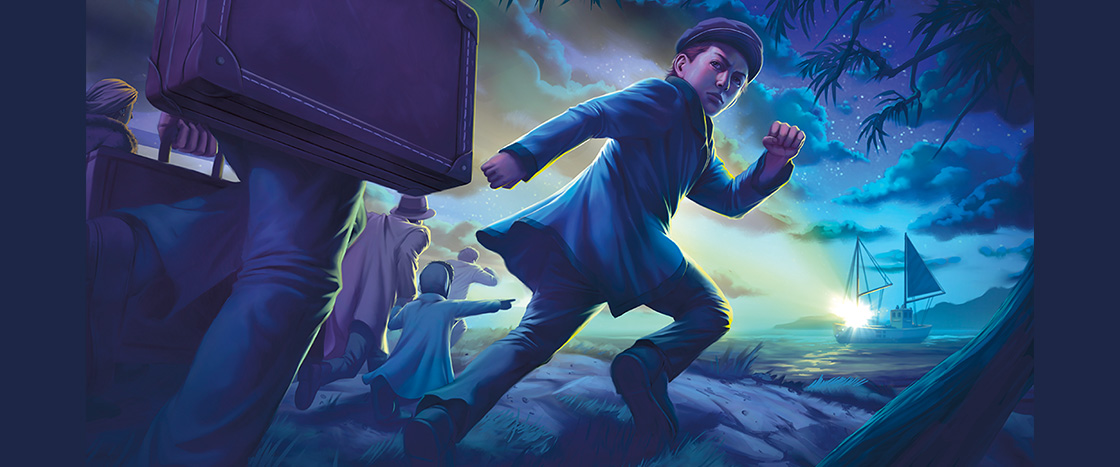United States Holocaust Memorial Museum, Courtesy of Gus Goldberger
Leo Goldberger
Thirteen-year-old Leo Goldberger and his family crouched in a cluster of bushes on the beach. They stared out at the dark water, shivering in the damp chill, waiting for a signal.
It was October 2, 1943, and the Goldbergers were fleeing Denmark, a country in northern Europe. Leo ached at the thought of leaving behind his friends, his school, his cozy apartment. But almost overnight, Denmark had become a dangerous place for Jewish people like him and his family. Leo, his parents, and his three brothers were waiting for a boat that would smuggle them to nearby Sweden, where they would be safer.
As the minutes ticked by, Leo’s heart filled with almost unbearable fear. What if they got caught? What if the boat sank in the rough waves? What if the boat never even came?
But there was another feeling too, and it was growing stronger: anger. Powerful, searing-hot anger.
What have we ever done to be in hiding, to be escaping like criminals? he thought.
Just then, Leo had to put his fury on hold because there it was: a faint light blinking out on the water. This was the signal. The boat had arrived.
Leo’s older brother grabbed the two suitcases the family had managed to take with them. Then they all waded into the icy black water, sending silent prayers out into the night.
Thirteen-year-old Leo Goldberger and his family hid in the bushes on a beach. Looking out at the dark water, they waited for a signal.
It was October 2, 1943, and the Goldbergers were escaping from Denmark, a country in northern Europe. Leo ached when he thought about leaving his friends, his school, his home. But Denmark had become a dangerous place for Jewish people like him and his family. Leo, his parents, and his three brothers were waiting for a boat that would smuggle them to nearby Sweden. They would be safer there.
As the minutes passed, Leo filled with fear. What if they got caught? What if the boat sank? What if the boat never even came?
But there was another feeling too. It was growing stronger. He felt angry.
What have we ever done to be hiding and escaping like criminals? he thought.
Just then, Leo saw a light blinking out on the water. This was the signal. The boat had arrived.
Leo’s older brother grabbed the two suitcases the family had with them. Then they all walked into the icy water, sending silent prayers out into the night.

